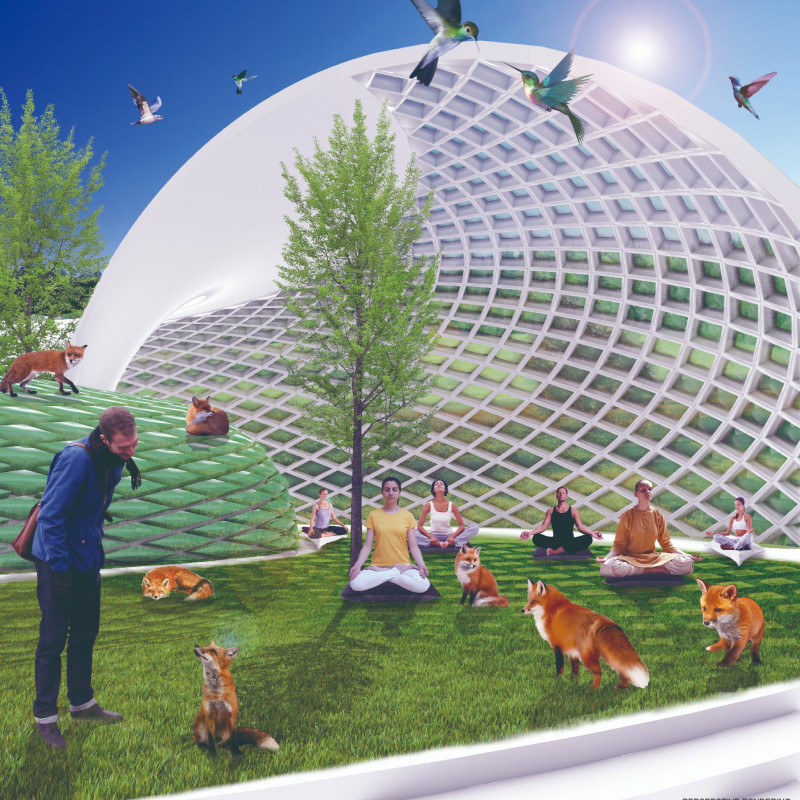5 key facts about this project
The architectural design is situated in a suburban area, responding to the increasing desire of people to leave bustling cities for quieter places. The focus is on promoting a better way of living that respects the environment. The project integrates natural elements into the design to create a balance between human activities and the local ecosystem. By encouraging a slower pace of life, the design aims to improve the overall quality of living for its inhabitants.
Conceptual Framework
The central idea is "harmonious symbiosis." This means finding a way for people and wildlife to coexist in the same space. As urban areas expand, the pressure on the environment grows, and this design looks to mitigate those effects. The structures are crafted not just for human use but also to serve as safe havens for local animal species, demonstrating a commitment to ecological preservation.
Design Inspiration
A key influence on the design is the Nautilus, which embodies natural proportions and the history of life on Earth. The spiral shape of the Nautilus is reflected in the overall design, symbolizing the connections between different living beings. This motif helps to link buildings with the surrounding landscape, promoting interaction rather than separation from nature.
Material and Construction Approach
While the specifics regarding materials are not detailed, sustainability is a key focus. The design follows a parametric approach that minimizes waste and promotes efficient use of resources. Additionally, the use of prefabrication methods allows for a construction process that is less harmful to the environment and allows for easier adaptation to its local context.
Spatial Organization and Functionality
The layout of the structures is designed to facilitate both daily human activities and the needs of local wildlife. This dual focus creates spaces that support a sustainable living environment for everyone involved. Natural features, such as algae, are included in the design of the façades. This feature improves air quality indoors while also contributing to the surrounding soil health, showing a strong link between the built environment and nature.





















































